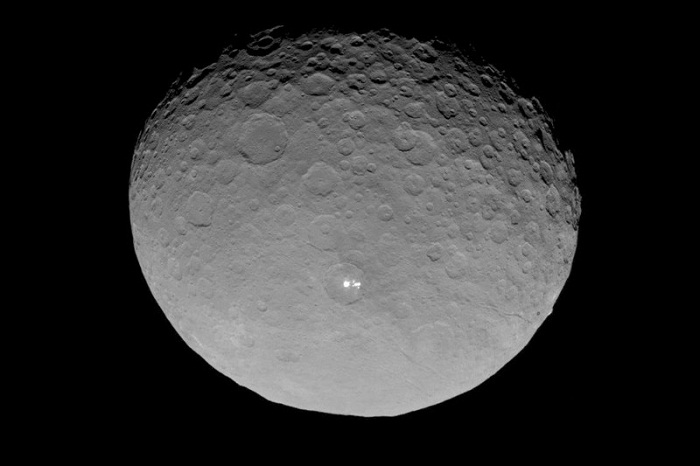Dwarf planet Ceres looks like an asteroid but acts like a comet

New measurements suggest that the bright regions are mostly made of icy salt deposits, says Andreas Nathues, lead investigator for Dawn’s camera team at the Max Planck Institute for Solar System Research in Munich, Germany.
A large crater called Occator has an especially bright pit, which probably contains water ice that vaporises as Ceres rotates into sunlight. The vapour produces haze clouds that appear and disappear during Ceres’s 9-hour day.
That makes Ceres the first large body in the asteroid belt to show such comet-like activity, blurring the line between comet and asteroid.
The Dawn team thinks the ice originated beyond the solar system’s “snow line”, where water molecules condense. In the early solar system, this would have been several hundred million kilometres farther from the sun than Ceres’s current location, suggesting that the dwarf planet was born in the land of comets and migrated inwards later (Nature, 10.1038/nature15754).
Other observations support this idea, says Maria Cristina De Sanctis of the Italian National Institute of Astrophysics in Rome. Using Dawn’s spectrometer, she and her colleagues detected that minerals called ammoniated phyllosilicates make up about 10 per cent of Ceres’s surface. For these minerals to form, ammonia had to be incorporated as the dwarf planet formed – and ammonia ice is also only stable at the temperatures beyond the snow line (Nature, 10.1038/nature16172).
Jupiter, Saturn, Uranus and Neptune probably moved a lot in the solar system’s early days, which could have sent objects like Ceres hurtling closer to the sun, says Chris Russell, Dawn’s principal investigator.
“Ceres is right at that transition zone, where we’re moving from predominantly rocky bodies to outer solar system objects that are predominantly water ice,” says Shane Byrne at the University of Arizona in Tucson. Its mix of comet-like and planet-like characteristics adds a new dimension to the debate about how to define a planet.















































